How Hatha Yoga Heals: Asana practice wakes tamas, calms down rajas and nourishes sattwa
by Swami Sitaramananda
Calming Rajas
You are not just moving constantly from one movement to another, looking outwardly – which is rajasic. Rajasic energy promotes outward-oriented action that perpetuates one’s state of discontent and desirousness and makes one looks outward for happiness. Rajasic practice maintains the state of restlessness, and will not bring you to the core of your being. A practice that allows you to be able to hold, internalize, breathe, relax in the posture connects you to your own True Self. You can read more about the Jnana yoga philosophy of the True Self.
Nourish Sattwa
This way of practice calms the rajas and brings in the sattwa. Sattwa is the purity, the balance, the connection, the wholeness of being, and the healthy sense of Self and Consciousness. This state of awareness also happens between the postures, when you breathe and relax. An advanced practitioner is the one that can hold the posture and relax, not the person who jumps around performing all kinds of variations. You can see how we practice Sivananda Yoga Asanas on this page.
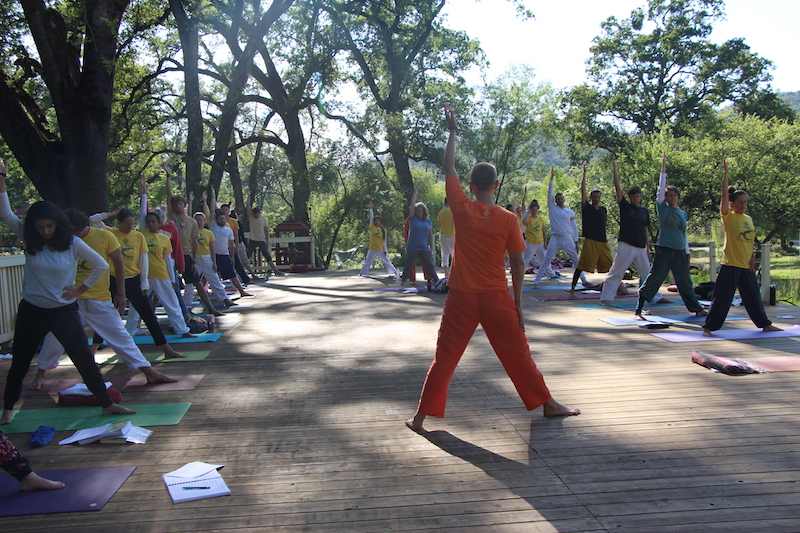
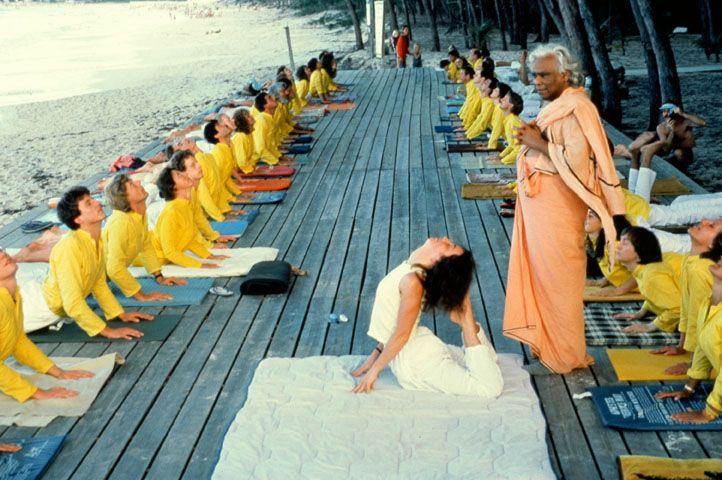
Asana practice done correctly heals
The asanas, or postures, move the prana (vital energy). In order to move the energy properly, you need to follow the sequence of the asanas, breathe, relax and hold the postures steady. The twelve asanas in the Sivananda sequence start with focus on the head (headstand) and end with the feet, with balancing poses. You can watch a video of the 12 Yoga Poses here.
At the end of the sequence, the session ends with the 10 minutes of final relaxation and the final prayer, plus the 2-5 minutes of meditation. This flow of energy helps you to recover the divine order of things (going from head to feet, from consciousness to action, from the universal to the individual, and from heaven to earth). Final relaxation sweeps all earthly attachments from feet to head and is like the icing on the cake when you harvest all the benefits of the Yoga asana practice session. Divine consciousness pervades all of your being, healing body, mind, and spirit. Find out more about relaxation by reading the Science of Relaxation.
Move the prana and enjoy the relaxation
After the prana has been moved by the asanas, charging all cells and parts of the body, deep relaxation comes naturally. If you cannot meditate, you can at least experience deep relaxation. During that deep relaxation, when you no longer identify with the body, the mind and its action, you heal on a deep level. Therapy resides in the movement of the vital prana, but also in the stillness and awareness of relaxation. You can read more about the Yoga Techniques for Relaxation.
In the language of Ayurveda, when people are moving they are balancing the vayus, or the subtle energies, and when they are relaxing, they are balanced. You can also read this article on Yoga Relaxation Techniques for 3 types of stress.
Unblocking the prana flow in asana practice
Prana or vital energy moves in the 72,000 meridians or nadis in the astral body. Prana can be blocked because of wrong thinking, unhealthy diet, drugs, and a negative lifestyle. That means inside the nadis (or astral tubes carrying the prana), no energy or little energy can pass through. You become depressed and stuck, losing your power. To really understand prana please read on this satsang with Swami Sita on Understanding Prana Life Force Energy.
What happens to a garden hose carrying water when you pinch on the hose? Pressure builds up. Similarly, when you do the asanas and hold the posture, this is exactly what happens–pressure builds up. What happens to the pinched hose when you release the pressure? water rushes through forcefully, flushing out all impurities. In the same manner, when you release an asana, energy rushes through, removing blockages and clearing impurities.
Three things happen at the same time: the holding of the posture, the focused breathing, and the relaxation in the holding.
To help unblock energy, you need to have these three phases in the performance of the postures:
- The entering into the posture, the holding of the posture, and the coming out of the posture. You do not jump into the posture, you do not fight in the posture, and you do not drop down.
- In holding the posture, you focus the mind, let yourself relax, and breathe gently.
- What happens when you come out of the posture? the pressure is released and the energy flows. When the energy flows, you become less stuck in your own ego drama that is the cause of emotional reactions and diseases.
Then you go to another posture and repeat the same process: pressure, build up, then release, until you move through the series of asanas. That is how energy moves from the top to the bottom, releasing blockages.
By the time you move to the standing and balancing asanas, your mind becomes clear and focused, your energy becomes internalized, and you are ready to function in the world while keeping your energy balanced and contained.
To learn more you can read about The Importance of practicing Hatha Yoga Everyday.
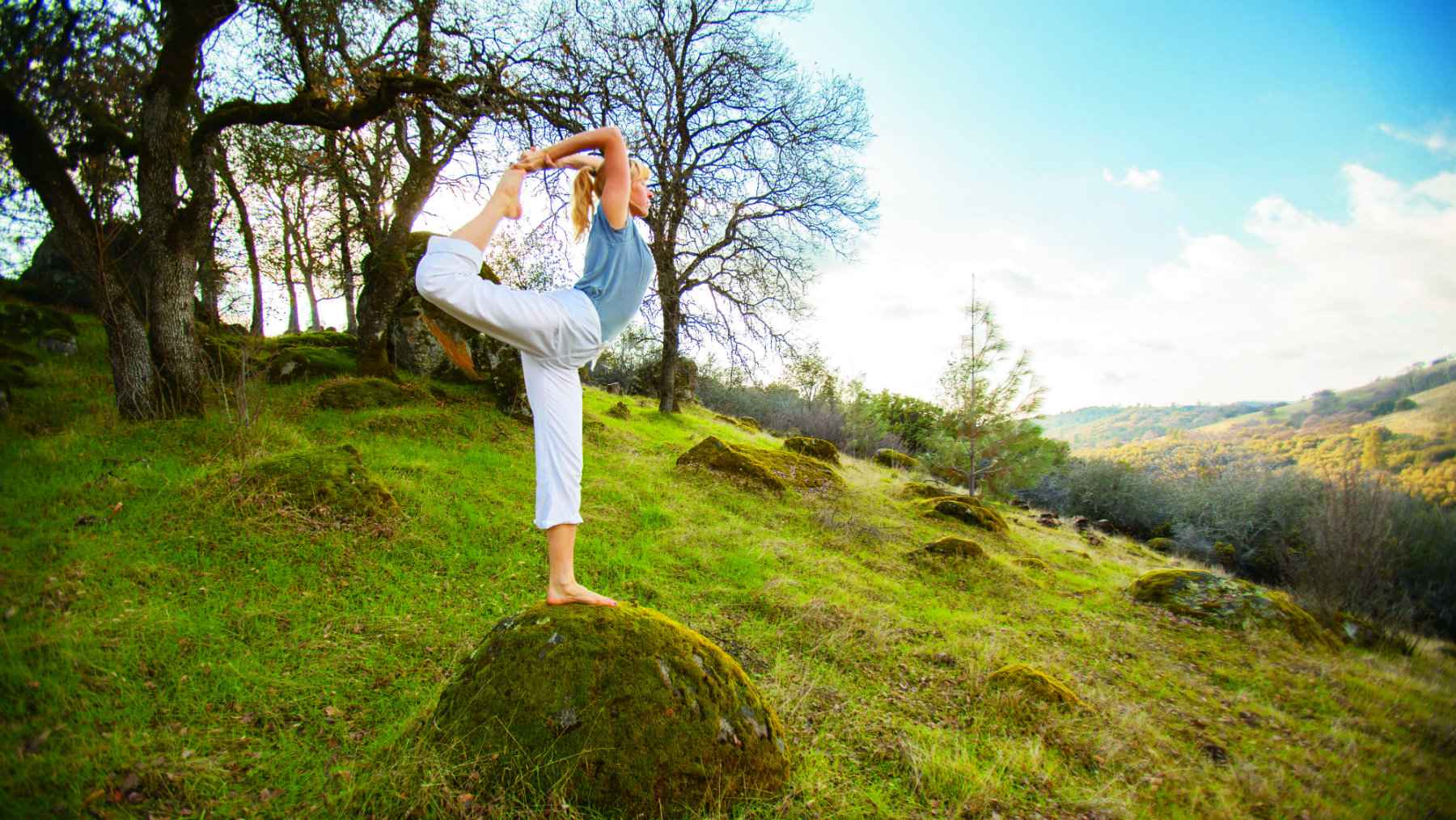
How does conscious breathing and conscious relaxation heal?
There are three kinds of breathing.
- inhaling breath
- exhaling breath
- holding breath
These three are involved in the performance of the postures. The breath varies dynamically, depending on what you do. The normal abdominal breath takes place in between postures, the breath that occurs when you are coming into and out of the posture, and the very, very subtle breath when you are holding the posture or when you retain during the alternate nostril breath or when you meditate in a posture.
However, even simple abdominal breath, or belly breath, diaphragmatic breath, yogic breath heal. Why? because the oxygen intake is doubled. This alone gives the yoga practitioner much more prana and removes stress. You can read here 27 Yoga Tips to Reduce Stress.
Breathing can be Therapeutic
For a beginner, the first thing is to breathe consciously three times a day. You can lie down for 20 minutes and that is all you do: breathe with awareness.
You can lie on your back, place a few books on the abdomen, and breathe so that the books move slowly and rhythmically, rising with the inhale and falling with the exhale.
In the breathing is the relaxation. You begin to relax, and the tension is released, recharging you with prana. This alone will bring a person back to him/herself, calm down the mind, and renew the connection with the true Self that is pure healing. To learn more about increasing prana you can read this article on Increasing Prana through the 5 Elements.
Balancing effect of Hatha Yoga
Pranayama is an essential part of Hatha Yoga. In most situations where people become imbalanced and experience psychic, mental, or emotional problems, tension in the body and stress, they are only breathing through one nostril. At that time, just by doing the Alternate Nostril breathing (Anuloma Viloma), by bringing the breath into both nostrils in a balance manner, already their situation will improve 100%. It doesn’t have to be anything complicated.
The ideal way in Hatha Yoga is to equalize the breath in both nostrils, so that the breath flows through both sides of the nostrils at the same time. The Ha (solar) energy and the Tha (lunar) energy, the hot and the cold, the yin and the yang, the sympathetic and parasympathetic systems are in balance. Active and passive energy are in balance. The mind and the emotions are in balance.
Why do we need to do sun salutations in the beginning?
Sun Salutations break the tamas, besides warming up all the muscles of the body and preparing you to turn inwards. The active movement of the body wakes up the tamas, or the force of inertia. After sun salutations, you will be successful in slowing down and relaxing, calming down the energy of rajas. When you are rajasic, the eyes are constantly moving around and the breathing is erratic.
When a person is calm, he or she breathes normally, the eyes are steady and the person can close the eyes, going through the sequence of postures. In the final relaxation, the person can move through the stages of the final relaxation, entering into a deep state of relaxation–a sattvic state.
Spiritual intention helps the practitioner to heal
A Yoga session must have the spiritual wrapping at the beginning and at the end, –i.e. a time to dedicate the practice, a moment of silence, prayers to channel all thoughts and surrender the results of the practice, and a thankful moment for the peace and relaxation received. During the practice, peace comes to the physical, the mental and the spiritual bodies. This leads to a deep Self-Awareness. Learn more by reading about Self Awareness and Intuition.
In deep relaxation, the practitioner rests in their core center, the causal body, and releases negative karmas carried in the subconscious. One gets in touch with one’s own Self and develops the right perspective about life, becoming deeply contented no matter what is happening externally. This is tremendous healing. To learn more read about the Deeper Path of Yoga Healing.
To learn more about this topics in person you can sign up for one of our Foundational Yoga Courses or consider signing up for our Yoga Teacher Training Course.
© Swami Sitaramananda 2018 No part of this article may be reproduced in any form without the written permission of the author.
Yoga Teacher Training Course
Check out our 200-hour Yoga Alliance certified Yoga Teacher Training Courses offered twice a year in California, 3x in Vietnam, once in China and once in Japan.
Foundational Courses
Choose from upcoming courses for beginners and intermediate level students.
Yoga Vacation
Rejuvinate your body and mind. Experience and progress with daily Yoga classes. Learn the 12 basic asanas and pranayama. Enjoy daily meditation, chanting, and organic vegetarian meals.
Rejuvenate Your Being
Follow us
[et_social_follow icon_style=”slide” icon_shape=”rounded” icons_location=”top” col_number=”2″ counts=”true” counts_num=”0″ outer_color=”dark”]
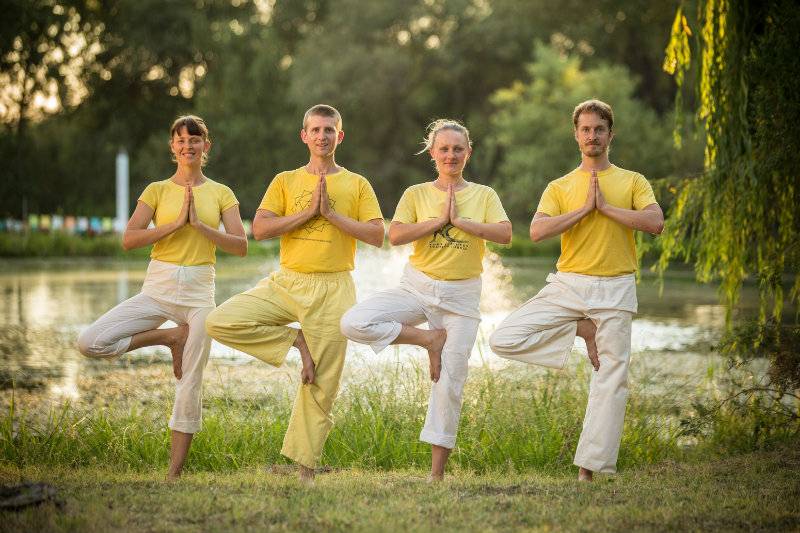
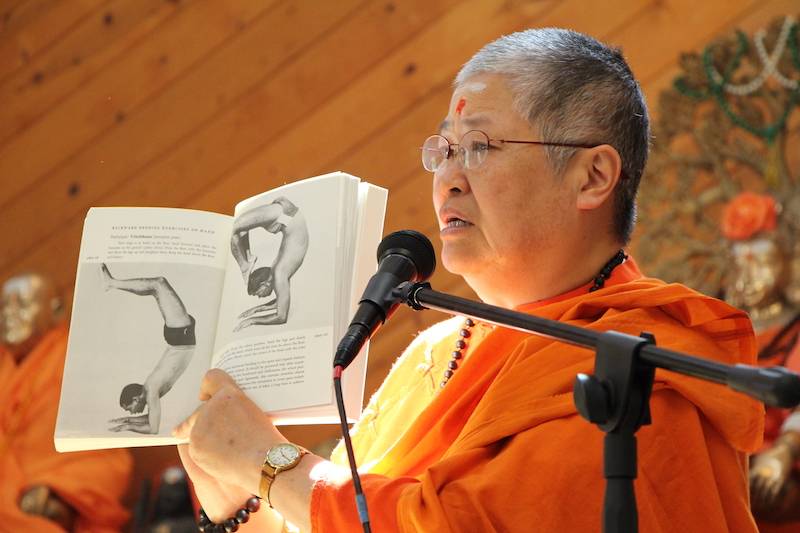



0 Comments